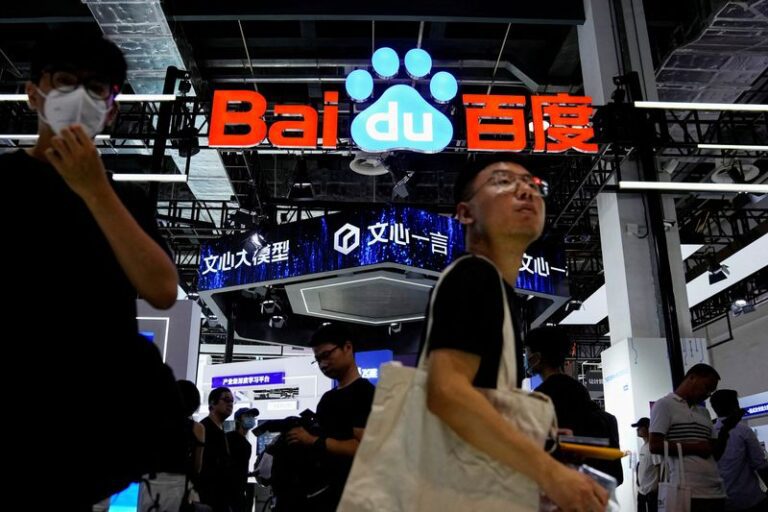By Liam Mo and Brenda Goh
BEIJING (Reuters) – China’s Baidu Inc on Tuesday unveiled a series of new applications for its artificial intelligence technology, including improved text-to-image generation technology and a tool allowing users to develop software applications without expertise in coding.
The country’s leading search engine company is among the technology companies focusing on commercializing large language model (LLM) applications after nearly two years of massive investment in research and development of models that they present as alternatives to OpenAI’s GPT.
At the annual Baidu World conference, CEO Robin Li introduced I-RAG, a text-to-image conversion technology that leverages Baidu’s search capabilities to solve the problem of “hallucinations”, referring to the generation of images which deviate from the entered text or contain nothing. -existing elements.
Li said the company’s Ernie platform now processes 1.5 billion user requests and interactions daily, a significant increase from the 200 million daily requests reported in May.
These interactions include tasks such as generating text, answering questions, and assisting with various applications using AI.
Baidu’s marketing efforts have largely revolved around its AI agents, which allow users to create their own applications.
The company also integrated the technology into its existing product line and offered it to external users through its cloud services.
Baidu also unveiled a pair of glasses with a built-in AI assistant, developed by its hardware division, Xiaodu. The gadget is equipped with cameras to capture photos and videos and supports voice interactions powered by Ernie.
The company does not aim to create an AI-based “super app,” Li said, signaling a divergence in strategy from other companies such as ByteDance, which has launched several AI applications independent this year.
Baidu also introduced Miaoda, which uses its LLM capabilities to generate code, allowing users to develop software applications without extensive coding expertise.
(This story has been corrected to clarify that I-RAG is a text-to-image generation technology, not a stand-alone text-to-image generator, in the headline and paragraph 1)
(Reporting by Liam Mo and Brenda Goh; editing by Rashmi Aich)

